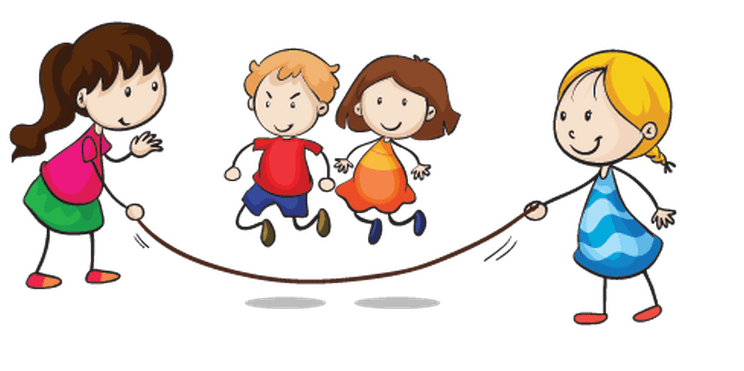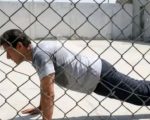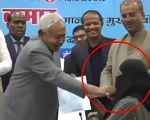Health and fitness have three components: mental, social and physical, and all of them are thoroughly dependent on the flow of blood in the body. This universal fact is indiscernible only to our schools and the education sector. We are yet to enjoy the wonderful benefit of physical fitness: a magic pill that turns on the brain.
US President John F Kennedy said, “Physical fitness is not only one of the most important keys to a healthy body, it is the basis of dynamic and creative intellectual activity.”
The relationship between physical exercise and mind is evident in diverse experiments and studies. Exercise stimulates the production of a chemical called dopamine in the brain, which makes the person happier and enhances their reception capability. It rids one of depression and procrastination and prevents cognitive decline. Physical workout also helps us with memory retention. It also increases planning ability, as physical exercise helps the brain cells to grow and sprout.
Even more important is the relationship between physical exercise and longevity. According to a study, “Thirty minutes of PA per 6 days a week was associated with about 40% mortality risk reduction. There was a five-year increased lifetime when comparing sedentary and moderate to vigorous physically active men. Associations to CV or non-CV mortality were slightly weakened, allowing competing risk. Conditional on the prevalence of smoking…” [CV stands for cardiovascular.]
Why is physical education so neglected?
The inclusion of physical exercise (PE) in the curriculum in a systematic manner can help change the society. The dogmatic physical education methodology – untrained PE teachers coupled with the perceived triviality of the phenomenon – is of no worth. Inadequate schedules devastate the only PE lesson of the week. Mostly a school with 1,000 students hire only one PE teacher because the subjects is not evaluated for the student’s annual result, hence stands worthless. No educational institution considers funding a department insignificant to academic parameters. Therefore, children are deprived of the equipment mandatory for sports.
Unfortunately, school campuses are often located in rented buildings designed to be residential units, which means that provision for play is negligible. Simultaneously, schools lack certified physical instructors. Wherever available, they only select the talented ones to form a sports team instead of working on the fitness of the kids. The remaining students have to either sit in the classrooms or have to clap and cheer for the players. In the given conditions, the certified trainers work to save their job by not doing it right.
Regular evaluation of learning holds utmost significance. One of the reasons for depriving our students of ample physical education is not evaluating it on the regular basis. Teachers are either not provided with the column in result card requiring PE marks or they give 90 to 100 percent marks to every student. And tragically, parents also don’t find physical education worthy enough to ask for.
Ideal Physical activity at school
Children have to spend extensive time at school inside their classrooms until they pass the 10th grade. School timing is, often, 8 am to 2 pm for 5 days a week. These prevalent miserable conditions force us to realize that we’re constantly failing in bringing our children to compete with the world in a positive manner. Especially, in the presence of internet, the danger of social disintegration is more severe than ever now. Children are getting used to spending all their time on online activities. Nowadays, studies require computer and internet, and on the other hand, most of the kids even successfully trick their parents by saying that they are studying while playing video games or watching YouTube. For a balanced life, physical exercise is more important than anything else.
We must provide supervised moderate or intense physical exercise for at least 60 minutes every day. This physical activity should be designed to promote a healthy, active lifestyle and increased physical fitness. Students must do physical exercise for at least 300 minutes per week. We are in dire need of evidence and fitness based PE programs.
A couple of decades ago, inter- and intra-district championships used to be held each year. Since most of the schools have become moneymaking machines, we’re not given the chance to enjoy our kids playing like professionals anymore.
The paybacks of physical literacy
Physical literacy lays the foundation for a healthy life. Teaching important movements and behavioral skills must be the foremost priority of PE teachers. Without learning the essentials of physical exercise our children can neither have fun in games nor can they get better at activities. Expertise in basic skills like running, catching, dodging, jumping, skipping, kicking etc. will enable them to participate in activities confidently. Likewise, if our kids are trained to balance themselves, they can perform yoga or participate in gymnastics. The PE curriculum must be revised at the national level and it should include all: non-locomotor, locomotor, manipulated skills and combination of all these to teach advanced movement concepts.
The role of parents and the community
Here are some ways to enhance physical workout of our youth during and after school hours:
- See if the time allocated for PE and recess at school are reaching desired standards. Does it provide ample time for physical activity both during and after school hours?
- Keep a check whether the existing PE program is of high quality or just a waste of time.
- Campaign for an activity-based curriculum since it makes the teaching of all subjects’ interesting and healthy.
- Monitor if the annual evaluation of PE program is carried out regularly, as only evidence-based physical education can be effective and meaningful.
- Parents must also try to encourage children by helping them engage in active transport like bicycling.
- Play badminton, cricket, football or any sport alike at least twice a week after the school hours.
- Make a habit of going for a short walk with your kids where you can also discuss the day.
- Take kids for camping at least once a month.














